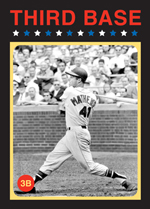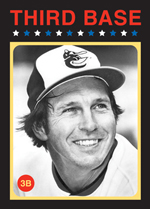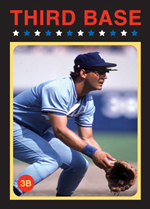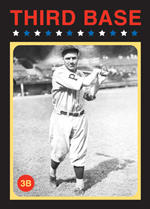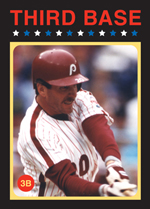
“To have his body, I’d trade him mine and my wife’s
and I’d throw in some cash.”
– Pete Rose
Mike
Schmidt
(1972-1989)
Mike Schmidt was not “one of” the greatest third baseman
in history—he was the greatest. It’s been said that
Schmidt combined the power of Eddie Mathews and the Gold Glove ability
of Brooks Robinson. He spent his entire career with the Philadelphia
Phillies, and in 1983, on the team’s 100th anniversary, the Phillies
named Schmidt the club’s greatest player. When he retired five
seasons later, the Phillies also retired his uniform number and erected
a statue of Schmidt outside their new ball park.
Schmidt was selected by Philadelphia in the second round of the draft,
just after the Kansas City Royals chose another future Hall of Fame third
baseman, George Brett. Schmidt breezed through the minors and was
the starting third sacker in 1973 for the Phils. He struggled early,
batting only .196 with 18 home runs, striking out every third at bat. Schmidt
worked hard to improve all aspects of his game, however, resulting in
a .282 average, 36 homers and 116 RBIs the following year. He regularly
took extra fielding practice and by 1976 won his first of 10 Gold Gloves.
He went on to win a then-record 3 MVP Awards and eight home run titles. In 1980 he was named the World Series MVP as he led the Phils to their first and only World Series title. He finished his career with 548 home runs, a record number for a third baseman.
